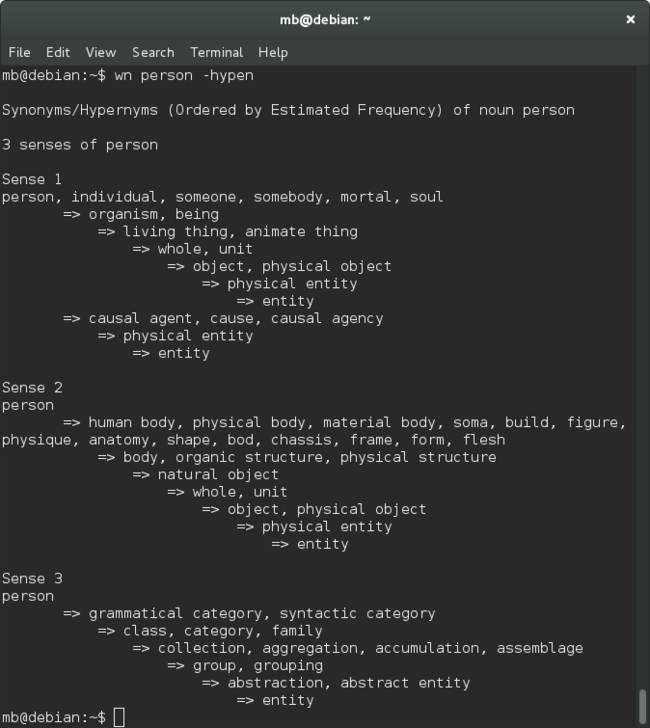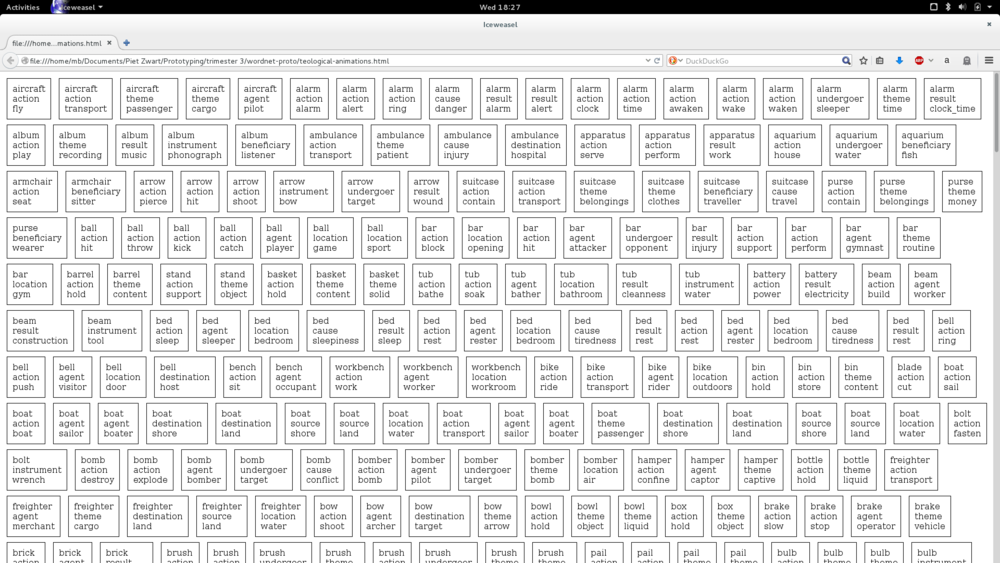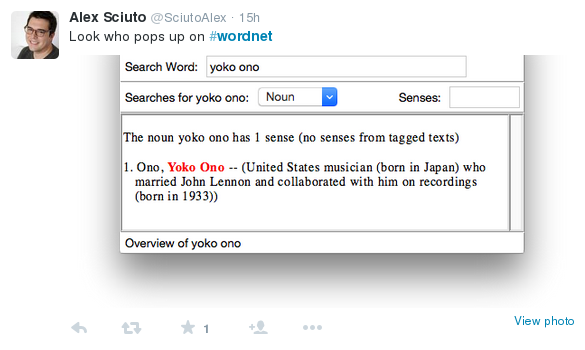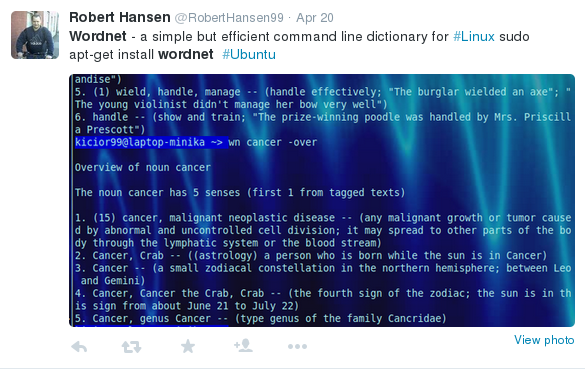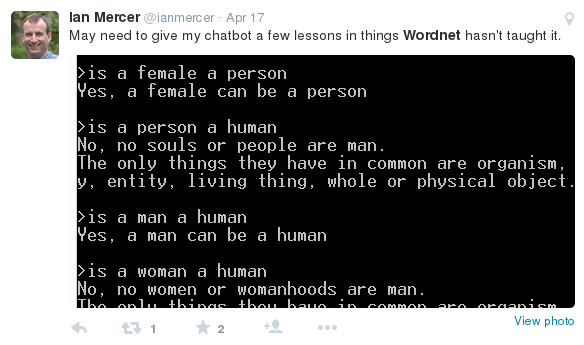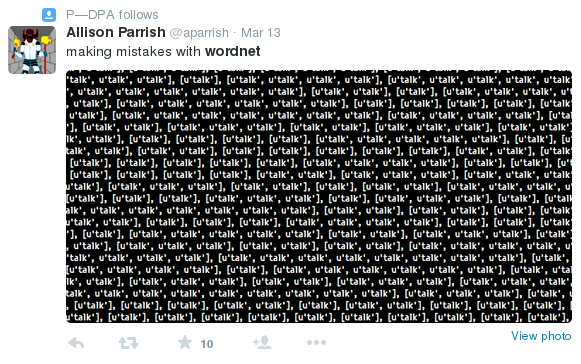User:Manetta/wordnet/wordnetwords: Difference between revisions
No edit summary |
|||
| Line 19: | Line 19: | ||
* license: BSD | * license: BSD | ||
=== WordNet in action === | |||
* WordNet is used for '''natural language processing''' purposes. <br> | |||
* difference between MRD / NLP : <br> | |||
:* ''machine readible dictionary (MRD)'' → dictionary which was printed before, but now electronic<br> | |||
:* ''natural language processing (NLP)'' → dictionary made from scratch, with an NLP purpose | |||
* "'''Search engines''' may use either a vocabulary, a taxonomy or an ontology to optimise the search results." [https://en.wikipedia.org/wiki/Machine-readable_dictionary (from)]<br> | |||
==== included as dictionary package (not a complete list) ==== | |||
* Pattern → a web mining module for the Python programming language. | |||
* GoldenDict → a computer open-source dictionary program | |||
* Lingoes → a single-click multi-lingual translation software program | |||
| Line 62: | Line 77: | ||
==== WordNet alive | ==== WordNet alive ==== | ||
[[File:Mb-WordNet-alive-tweets-01.png]]<br> | [[File:Mb-WordNet-alive-tweets-01.png]]<br> | ||
Revision as of 14:47, 12 May 2015
WordNet
WordNet is an English lexical database, created in 1985 in the Cognitive Science Laboratory of the Princeton University.
kernal
- official website: http://wordnet.princeton.edu/wordnet/
- official files: http://wordnetcode.princeton.edu/
- versions:
- 3.1 (?)
- 3.0 (2006)
- 2.1 (2005)
- 1.7.1 (?)
- 1.7 (?)
- 1.6 (?)
- 1.5 (?)
- 1.4 (?)
- 1.3 (?)
- 1.2 (1992?)
- license: BSD
WordNet in action
- WordNet is used for natural language processing purposes.
- difference between MRD / NLP :
- machine readible dictionary (MRD) → dictionary which was printed before, but now electronic
- natural language processing (NLP) → dictionary made from scratch, with an NLP purpose
- machine readible dictionary (MRD) → dictionary which was printed before, but now electronic
- "Search engines may use either a vocabulary, a taxonomy or an ontology to optimise the search results." (from)
included as dictionary package (not a complete list)
- Pattern → a web mining module for the Python programming language.
- GoldenDict → a computer open-source dictionary program
- Lingoes → a single-click multi-lingual translation software program
WordNet elements — *highlights*
'entity'
the highest level of abstraction in WordNet: 'entity'
→ entity -- (that which is perceived or known or inferred to have its own distinct existence (living or nonliving))
teleological links
→ http://wordnetcode.princeton.edu/standoff-files/teleological-links-README.txt
RELATION: DESCRIPTION:
action Describes the typical intended activity (purpose) which
the artifact was designed for.
e.g., a bed is intended for (ACTION) sleeping
For this typical intended activity, there are 11 roles used to describe it.
Note these relations are between the artifact's activity (not the artifact)
and the object mentioned.
RELATION: DESCRIPTION:
agent a rester is a (typical) AGENT of sleeping on a bed
beneficiary an audience is a (typical) BENEFICIARY of showing a movie
cause tiredness is a (typical) CAUSE of sleeping on a bed
destination a shore is a (typical) DESTINATION of sailing a boat
experiencer a child is a (typical) EXPERIENCER of swinging on a swing
instrument a gun is a (typical) INSTRUMENT of shooting a bullet
location a bedroom is a (typical) LOCATION of sleeping on a bed
result rest is a (typical) RESULT of sleeping on a bed
source a shore is a (typical) SOURCE of sailing a boat
theme a passenger is a (typical) THEME of transporting by boat
undergoer a target is a (typical) UNDERGOER of shooting an arrow

